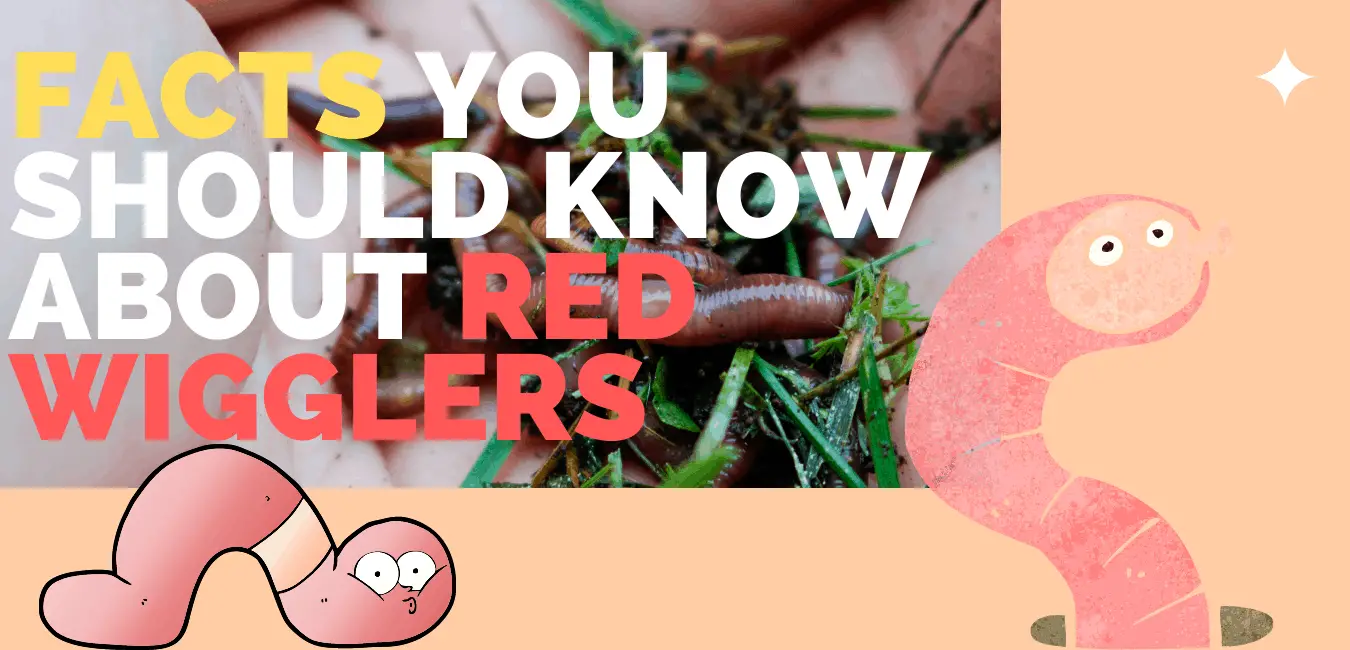
Jeffery Jago is a expert in horticulture and worm breeding. With a background in plant cultivation
Last Updated on April 27, 2022 by Jeffery Jago
The red wiggler is one of the most popular worms for use in composting. Unlike other earthworms, red wigglers don’t live in earth and prefer to be underneath damp plant litter and decomposing organic matter. There have been a lot of names given to the red wiggler, Some of them are accurate, and some of them are completely wrong for the species. This is because red wigglers look a lot like other types of worms.
Regardless of the misconceptions, red wigglers are very fascinating in their own right, here are some cool facts you should know.

- You are unlikely to find a red wiggler in soil, At least of their own free will. It’s just not for them and they prefer the damp underside of decomposing organic matter. This makes them an ideal composting worm and is the reason for its massive popularity among gardeners and vermicomposters.
- Red wigglers are considered nocturnal. This is because of their photosensitivity which causes them pain and potentially death if they are in the sunlight for too long. That has often spurred offhand jokes about them being “vampire worms”.
- They have a defensive mechanism, and when handled improperly or roughly, will release a foul-smelling liquid that is annoying to get off your hands.
- Much like humans and other species, the younger worms will eat more food than the older worms. If you are ever trying to min/max your composting pile, this is a good thing to keep in mind.
- When a red wiggler is sexually ready, its clitellum will turn a dark orange to indicate its intent to mate.
- Just like most earthworm species, red wigglers are also hermaphrodites. Although they have both sexual organs, they cannot reproduce with themselves and do require other worms. Interestingly, when a worm mates it both “impregnates” and becomes “pregnant”.
- Red wigglers need grit to aid in their digestion. This is accomplished in the gizzards. (Worms have no teeth!)
- Red worms have no bones. But they still need calcium!
- Red wigglers make great fish bait, Fish love em’.

Why are red wigglers toxic to garter snakes
Are red wigglers toxic?
Red wigglers are toxic to garter snakes. While the exact reason for this is not known, it is thought that the worms may produce a slime coat that is poisonous to snakes.
Alternatively, the toxins may be present in the worms’ flesh itself. Either way, garter snakes will avoid eating red wigglers if they can help it.
What about other reptiles, are red wigglers toxic to all reptiles?
Most reptiles will avoid eating red wigglers because of the toxins present in the worms. However, some reptiles are known to eat red wigglers without any ill effects.
Red wigglers are best kept in your vermicomposting bin rather than as a food source for your reptile, Most won’t like the disgusting slime coat taste anyway.

Can you feed red wigglers to reptiles?
Some reptiles can eat red wigglers, these include things like bearded dragons and turtles. Although turtles should only eat them in moderation, as red wigglers can be high in fat and protein. For best results, feed your reptile a varied diet that includes both worms and other foods.
If you’re thinking of raising red wigglers for your reptile, make sure to do plenty of research first to know if they are toxic to your specific reptile.
For most snakes, the answer is no, they are toxic and should not be eaten. However, there may be exceptions, so it’s important to do your research before feeding them to your pet.

Can red wigglers survive winter?
Will red wigglers survive the winter? It depends on what your setup situation is like in your composting bin. Anything below 32F 0C will kill your worms, and anything above 80f 26C will also kill them.
If you keep your bin in a room that stays within this range, then yes they will most likely survive the winter just fine.
However, if your bin is exposed to cold outside temperatures, or experiences drastic temperature swings throughout the day, it may be tough for your worms to make it through the winter months.
It’s important to do your research and prepare for winter if you’re keeping red wigglers as a composting worm.

Are red wigglers invasive?
More importantly, where are red wigglers native to? Red wigglers are not native to North America. In fact, they are originally from Europe and Asia.
However, currently, they are not classified as invasive species in North America. This is because they have not been shown to cause any significant harm to the environment or native species.
Although, it is important to be careful when releasing them into the wild, as they could out-compete native species for food and habitat.
Red wigglers were first introduced intentionally on every continent except Antarctica because of their highly desirable traits for composting.
So, while they may not technically be invasive, it is important to keep an eye on their population and take steps to control them if needed.

Can I release red wigglers in my garden?
Unlike other worm species, Red wigglers can’t survive on just dirt from your garden. So, it’s not a good idea to release them in your garden.
This will cause them to leave your garden in search of food, and they will quickly die off.
However, if you have a composting bin at home that has regular access to food scraps and other organic matter, red wigglers can be very useful for managing your worm bin.
Then you can use the compost produced by your red wigglers as a great nutrient-rich fertilizer for your garden and plants!
They are great at turning food waste into nutrient-rich compost, which will help your garden thrive and produce a bountiful harvest.

